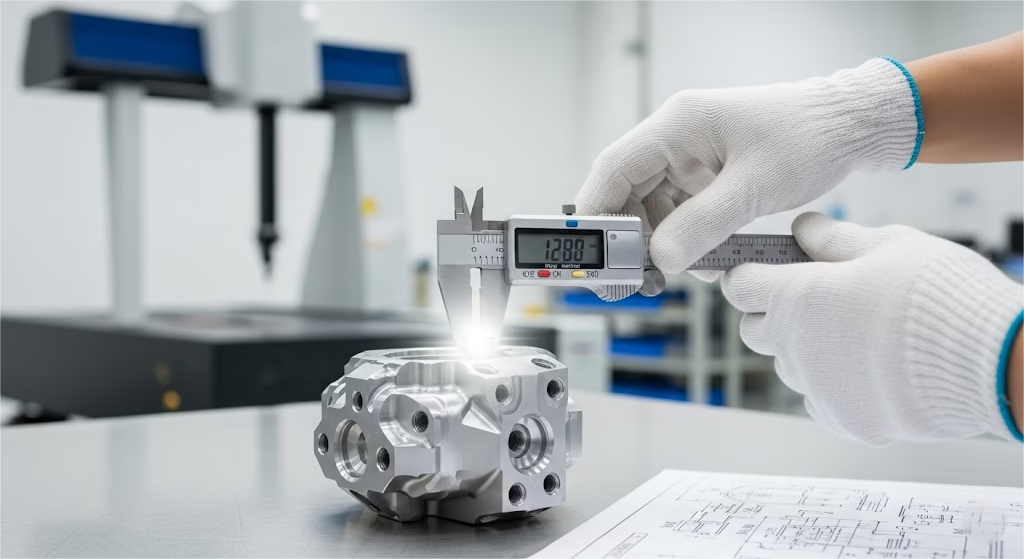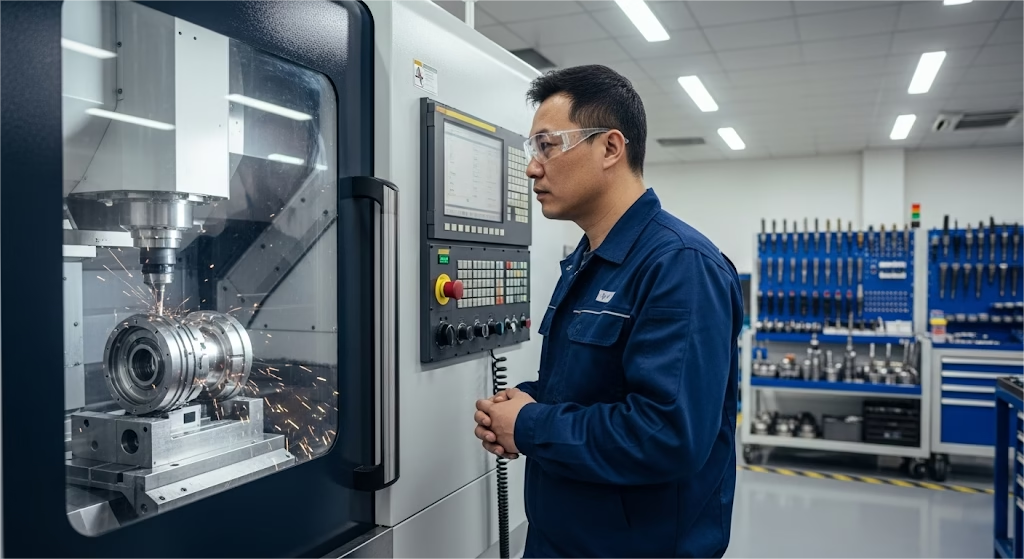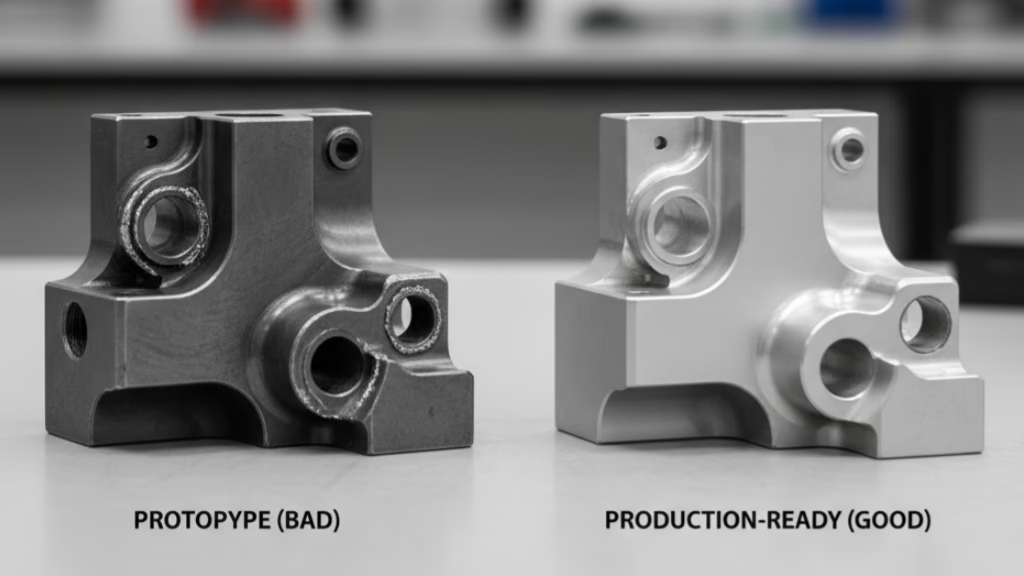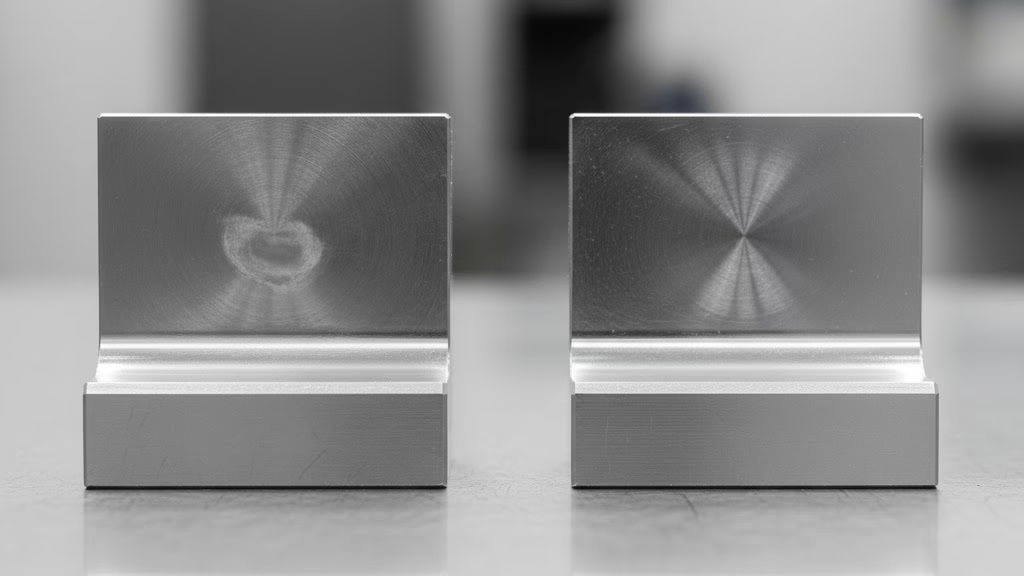Struggling with unpredictable tool life and high costs when machining Inconel? This guide provides a proven, systematic framework to overcome the core challenges of heat, work hardening, and process instability. We’ll give you the exact strategies and data points needed to transform your Inconel machining operations from a constant battle into a controlled, profitable process.
Successful Inconel machining requires managing extreme heat and severe work-hardening tendencies. This involves using low cutting speeds (typically 20-40 m/min for carbide), maintaining a consistent chip load to avoid rubbing, and employing high-pressure coolant (above 70 bar/1,000 psi) to control temperature and aid chip evacuation. Advanced CAM toolpaths, like trochoidal milling, are critical to maintain stability and improve tool life.
Now that you have the basic answer, dive into the full guide. We’ll break down the specific tool geometries, advanced CAM strategies, and real-world case studies you need to see.
Understanding the Material: The Physical Properties of Inconel
Why does your proven experience with steels and aluminum seem to fail when it comes to Inconel?
It’s because you’re facing a material with a unique combination of physical properties that work against conventional machining processes, a decision explored in our high-temperature materials guide.
Understanding these properties is the first step toward mastering your machining strategies.
| Challenge | Root Cause (Physical Property) | Solution |
|---|---|---|
| Rapid Tool Wear | Extreme Heat (Low Thermal Conductivity) | High-Pressure Coolant; Ceramic Inserts |
| Notching / Chipping | Work Hardening | Consistent Chip Load; Avoid Dwelling |
| Tool Breakage | High Cutting Forces (High-Temp Strength) | Trochoidal Milling; Rigid Setup |
These factors contribute to Inconel’s low machinability rating, which is often cited as being between 8% and 15% relative to AISI 1212 steel. This isn’t just a number; it’s a clear indicator that your approach must be fundamentally different.
A New Mindset: Shifting from Cutting Tactics to Risk Management

To succeed with Inconel, you need more than just good tools and parameters; you need a fundamental shift in your manufacturing philosophy. The goal is not simply to cut metal, but to manage a high-stakes, high-risk process. This means adopting a new set of principles that prioritize predictability over raw speed.
Stability Outweighs Speed
In the world of high-value components, the pursuit of the lowest “cost-per-part” can be a dangerous trap. Consider this: a single scrapped Inconel workpiece due to an aggressive but unstable process can instantly erase the savings accumulated over months of minor cycle time reductions.
The most economical process for Inconel is not the fastest one, but the one that is the most predictable and reliable.
A process that is 15% slower but guarantees a 99.9% success rate is infinitely more profitable than a faster process with a 95% success rate. The true objective is achieving the lowest risk-adjusted cost.
Embrace the Entire Machining System
It’s easy to blame the cutting tool when an operation fails, but the tool is only one part of a complex, interconnected system.
As Michael Gomez, an Applications Engineer at DMG Mori USA, often emphasizes in technical seminars, “You can have the best cutting tool in the world, but if you put it in a non-rigid setup, you will fail when machining Inconel. Process stability is paramount.”
Your success depends on the integrity of the entire chain:
- The Machine Tool: Its structural rigidity and damping capabilities are your first line of defense against vibration.
- The Tool Holder: A high-quality hydraulic or shrink-fit holder provides the concentricity and stability that a standard collet cannot.
- The Cutting Tool: Its specific geometry and edge preparation are critical.
- The CAM Software: Modern toolpaths are essential for controlling tool engagement and heat.
A weakness in any one of these links will compromise the entire operation. Before investing in a new brand of end mill, first inspect your tool holders for runout and verify the rigidity of your workholding.
Anticipate Material Variations
Finally, be aware that not all Inconel is created equal. Even material from the same supplier that meets the same aerospace specifications can have slight variations in its microstructure from one batch to the next.
For most materials, this variance is negligible. For Inconel, a 15% shift in machinability can be the difference between a stable process and a catastrophic failure.
Implement a simple “first-article” or test-cut procedure for every new batch of raw material to establish a baseline before committing to a full production run. This proactive step transforms you from reacting to problems to anticipating them.
A Tactical Playbook: Your Three Pillars for Execution

With a new mindset in place, it’s time to translate strategy into action. Your success on the shop floor will be built on three tactical pillars: how you select your tools, how you program your toolpaths, and how you manage heat and chips.
Mastering these areas will provide the practical control you need for consistent results.
Tool Selection: Beyond the Catalog
Choosing the right cutting tool for Inconel goes far beyond simply picking a brand. You must look at the micro-geometry of the cutting edge itself.
As experts from Kennametal often note, a razor-sharp edge is too fragile for the extreme pressures of Inconel machining and will chip almost immediately.
A tool with a specific honed or chamfered edge preparation (a microscopic rounding of the cutting edge) adds critical strength, preventing micro-fracturing and promoting predictable wear. For roughing, select tough carbide grades with this enhanced edge.
For high-speed finishing, Sialon ceramic inserts can be transformative, allowing you to increase cutting speeds by up to 5 times—from a typical 35 m/min to over 200 m/min—but they require an exceptionally rigid setup to perform.
CAM Toolpaths: Machining Smarter, Not Harder
The days of “hogging out” material with full-width slotting cuts are over, especially with Inconel. Modern CAM software offers advanced toolpaths that are essential for success.
The most effective of these is trochoidal milling (often called dynamic milling). This strategy uses a small radial depth of cut (typically 5-15% of the tool’s diameter) but a much larger axial depth of cut.
By controlling the tool’s engagement angle, this technique keeps cutting forces low and consistent, creates thin chips that carry heat away effectively, and spreads wear across a longer portion of the cutting edge.
This approach allows you to achieve a higher material removal rate with significantly less stress on the tool and machine.
Mastering Hard Materials? We Can Help.
Your design requires the performance of Inconel, but machining it shouldn’t be a bottleneck. Zenithin specializes in 5-axis CNC machining for the most demanding alloys, ensuring your parts meet the tightest tolerances.
Heat and Chip Control: Managing the Primary Failure Modes
Since heat is the primary enemy, your cooling strategy is critical. High-pressure coolant (HPC) at 70 bar (1,000 psi) or higher is not just a luxury; it is a fundamental process component.
Scott Walker, President for the Americas at Sandvik Coromant, states that HPC “acts like a hydraulic wedge, precisely targeting the cutting zone to break chips and prevent them from re-cutting, which drastically improves tool life and process security.”
Effective cooling isn’t just about reducing temperature; it’s about controlling the chip. Long, stringy chips can wrap around the tool or workpiece, causing catastrophic failure.
Your goal is to produce small, manageable “C” or “9” shaped chips that are easily evacuated from the cutting zone.
Real-World Cases and Lessons Learned

Theory and data provide a solid foundation, but the real proof comes from the shop floor. The strategies discussed above are not just ideas; they are proven tactics that have turned challenging Inconel projects into profitable successes.
Here are a couple of real-world examples that illustrate the power of this systematic approach.
Case Study: From Burning Tools to Stable Turning
An aerospace supplier was struggling with a turbine shaft made from Inconel 718. Their high-end carbide inserts had a wildly unpredictable life, lasting anywhere from 3 to 7 minutes per edge. This forced constant operator supervision and led to significant cost overruns.
Instead of trying yet another carbide grade, the team implemented a systemic change. They switched from carbide to Sialon ceramic inserts and upgraded their standard flood coolant to a 70-bar (1,000 psi) high-pressure coolant system.
The results were transformative. The cutting speed was increased by nearly five times, and tool life stabilized at a predictable 25 minutes per edge. The overall cost per part was reduced by 40%, and the process became secure enough for one operator to manage two machines.
Common Pitfalls and Expensive Lessons
Experience also teaches us what not to do. Here are some of the most common traps engineers fall into when machining Inconel:
- The Trap of Being “Too Cautious”: In an attempt to protect the tool, many engineers will use a very shallow depth of cut. This is a critical mistake. Instead of cutting, the tool rubs against the material, creating a significant work-hardened layer. The next pass then has to contend with this hardened surface, leading to accelerated tool wear.
Lesson: Always ensure your depth of cut is aggressive enough to get underneath the previously hardened layer, typically greater than 0.15 mm. For more on this, see our guide on DfM mistakes. - The Trap of Ignoring the Chip: You can have the perfect program, but if you don’t manage the chip, the process will fail. Long, tough Inconel chips will wrap around the tool and workpiece, halting production and potentially damaging both.
Lesson: Make chip control a primary goal. Use tools with effective chipbreakers and leverage high-pressure coolant to break chips into manageable pieces.
By learning from both successes and failures, you can avoid these common pitfalls and apply a proven methodology to your own Inconel machining challenges.
Conclusion: From Knowledge to Control
Conquering the challenges of Inconel machining is not about finding a single magic bullet. It is about fundamentally shifting your approach from a search for the perfect speed and feed to a holistic focus on process control.
When you learn to manage the core variables—heat, tool pressure, and chip formation—you move from a position of reacting to problems to proactively controlling the outcome.
By understanding the material’s unique properties, adopting a risk-management mindset, and executing with proven tactical solutions, you can transform Inconel from a source of frustration into a consistent and profitable capability for your shop.
If you are facing a specific challenge with your Inconel machining operations and want to discuss how these strategies can be applied in your facility, reach out to our application engineering team. Let’s work together to turn your most difficult manufacturing challenges into your greatest successes.
Ready to Machine Your Inconel Parts with Confidence?
You have the design. We have the expertise in high-precision machining for hard materials. Let Zenithin be your trusted partner in turning complex Inconel challenges into reliable, high-quality components.
References & Notes
[1] Thermal Conductivity Data: The thermal conductivity values for Inconel 718 (11.4 W/m·K) and 4140 alloy steel (42.6 W/m·K) are widely accepted engineering reference points used in thermal analysis for machining. These figures are commonly cited in material datasheets and machining handbooks.
[2] Work Hardening: The significant increase in surface hardness (from ~36 HRC to over 50 HRC) is a well-documented phenomenon in the machining of nickel-based superalloys. This data is derived from numerous empirical studies and is a foundational concept in any advanced guide to machining these materials.




